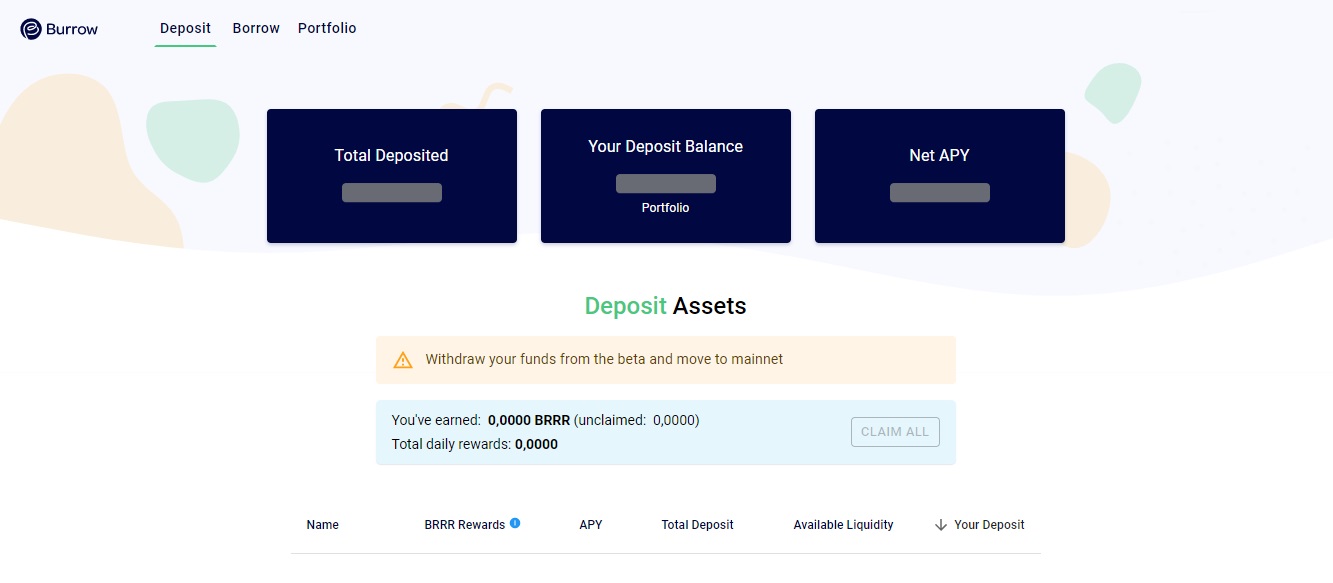Burrow — a non-custodial, decentralized, pool-based interest rate platform that allows users to lend assets to earn interest and borrow against them to unlock liquidity. Burrow is similar in nature to Aave, Compound and other pool-based protocols.

About Burrow project
It natively runs on the NEAR blockchain, a level 1 sharded proof-of-stake blockchain with a WebAssembly runtime. Burrow aims to unlock liquidity for interest-bearing assets, such as stNEAR and stETH. Burrow users will be able to deposit stNEAR as collateral and borrow more NEAR to create a leveraged position or take a stablecoin to create a self-sustaining position.
Users can withdraw their provided assets at any time as long as the utilization rate of the asset is less than 100% after withdrawal. If the withdrawal increases the usage rate to 100%, the withdrawal will be temporarily unavailable. Users can also specify a percentage of their pledged assets as collateral. Assets, not designated as collateral, will not be liquidated and will continue to earn interest. Users can control which assets are designated as collateral (and what percentage of each asset) at any time.
Supported assets:
| 1. | NEAR. |
| 2. | ETH. |
| 3. | wBTC. |
| 4. | USDT. |
| 5. | USDC. |
| 6. | DAI. |
Users can borrow against their provided assets. All positions must be over-collateralized and if the value of a user's collateral falls below the minimum collateral ratio, their collateral will be liquidated to pay off their debt. Each asset has a unique minimum margin because each asset carries a unique risk.
Burrow maintains 8 lending assets and 7 borrowing assets now. The Burrow DAO will vote to list new assets that are considered safe. The DAO is particularly interested in raising interest-bearing assets, including L1 derivatives (such as Staked NEAR).
More about defi app
When launched, Burrow will use a whitelisted oracle, inspired by MakerDAO. The oracle currently has five independent operators and can easily be expanded to a decentralized self-sufficient network. In order for the price to be reported on the network, most oracles must offer the current price within a narrow range.

